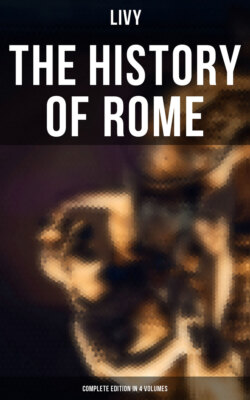Читать книгу THE HISTORY OF ROME (Complete Edition in 4 Volumes) - Livy - Страница 49
На сайте Литреса книга снята с продажи.
44
ОглавлениеThe census being now completed, which he had expedited by the terror of a law passed on those not rated, with threats of imprisonment and death, he issued a proclamation that all the Roman citizens, horse and foot, should attend at the dawn of day in the Campus Martius, each in his century. There he drew up his army and performed a lustration of it by the sacrifices called suovetaurilia, and that was called the closing of the lustrum, because that was the conclusion of the census. Eighty thousand citizens are said to have been rated in that survey. Fabius Pictor, the oldest of our historians, adds, that such was the number of those who were able to bear arms. To accommodate that number the city seemed to require enlargement. He adds two hills, the Quirinal and Viminal; then in continuation he enlarges the Esquiliæ, and takes up his own residence there, in order that respectability might attach to the place. He surrounds the city with a rampart, a moat, and a wall: thus he enlarges the pomœrium. They who regard only the etymology of the word, will have the pomœrium to be a space of ground without the walls; but it is rather a space on each side the wall, which the Etrurians in building cities consecrated by augury, reaching to a certain extent both within and without in the direction they intended to raise the wall; so that the houses might not be joined to it on the inside, as they commonly are now, and also that there might be some space without left free from human occupation. This space, which it was not lawful to till or inhabit, the Romans called the pomœrium, not for its being without the wall, more than for the wall's being without it: and in enlarging the city, as far as the walls were intended to proceed outwards, so far these consecrated limits were likewise extended.
